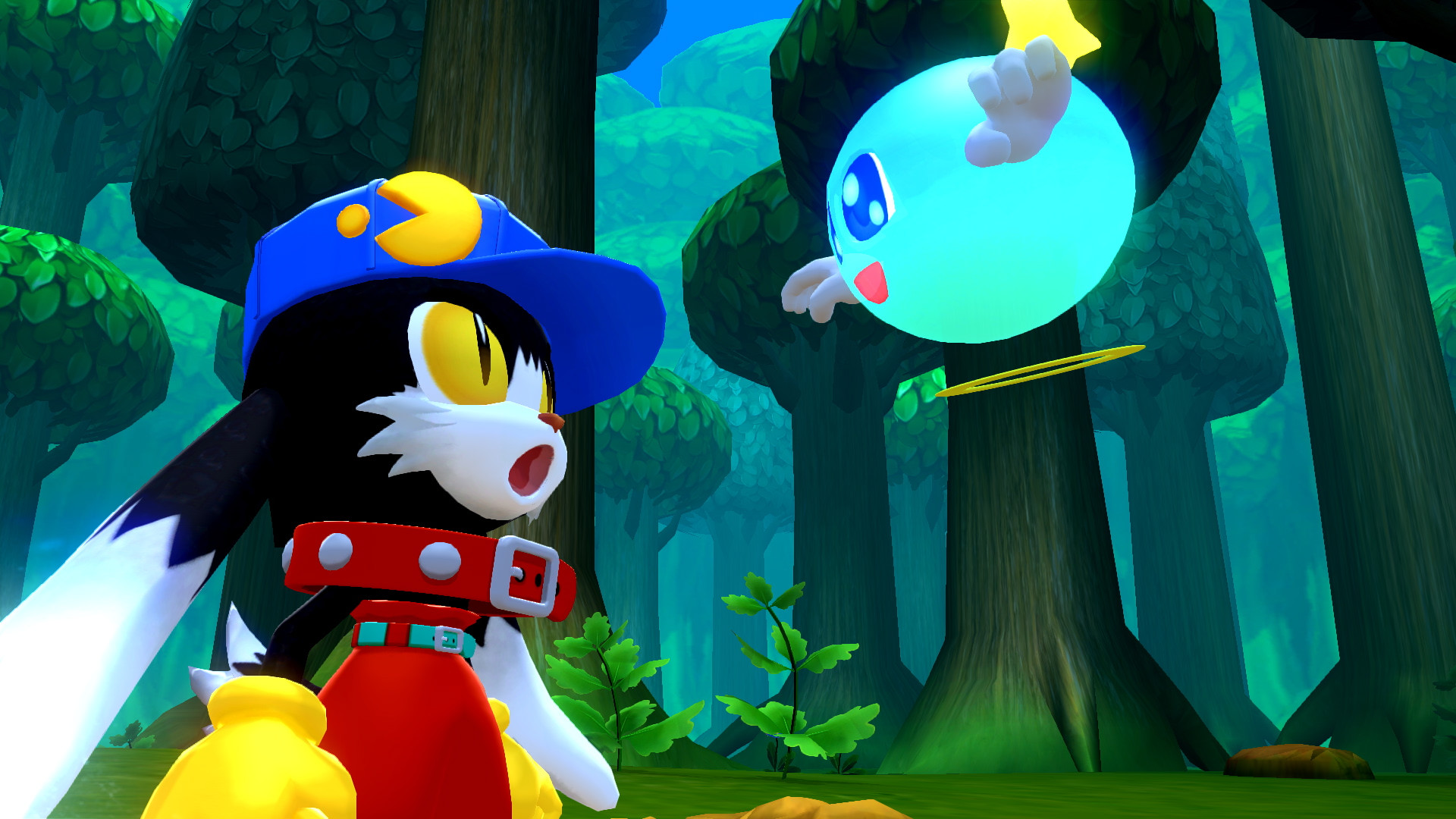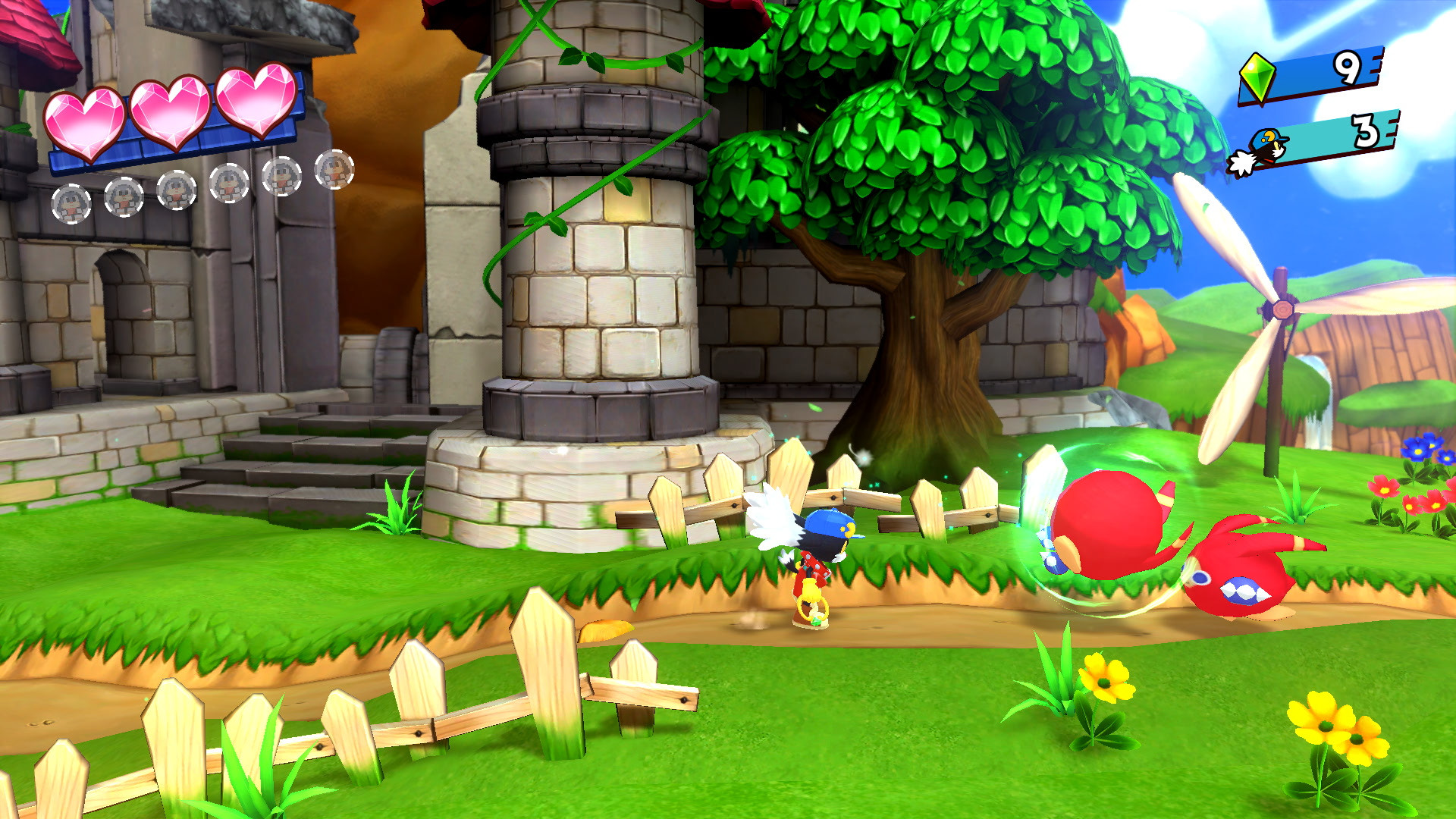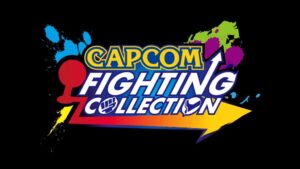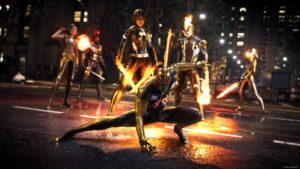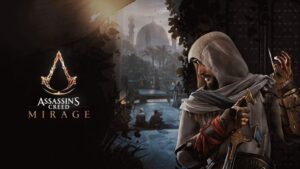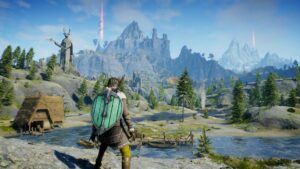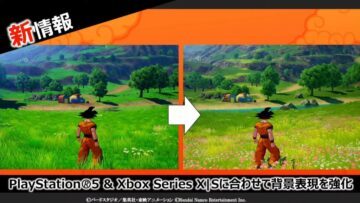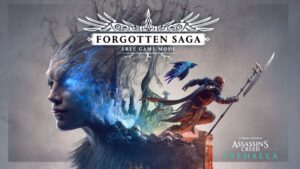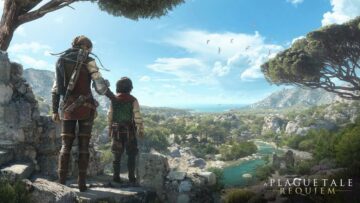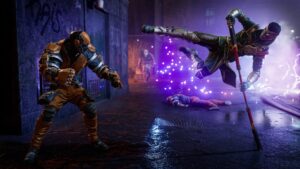Fans of classic platformers from the mid ‘90s have yet another revival on their hands with the Klonoa Phantasy Reverie Series that might not command an audience as large as Crash, Sonic, or Mario, but does elicit just as much passion from its fans. Here we see the original two games, Klonoa Door to Phantomile from the PlayStation One era, and Klonoa 2 Lunatea’s Veil from the PlayStation 2’s. Both of which are great games remembered fondly by those that played them, but nowadays you might find the steep prices the games go for a bit of a barrier to entry. Not to worry though, as Bandai Namco has a spruced-up remaster of both games together in this collection.
For those that missed out on these delightfully cozy two games, Klonoa started out as a charming 2.5D game that, despite feeling almost exclusively aimed at Japanese audiences, has always held on to a solid following in the west. It never came close to the bigger mascots of the 90’s that everyone knows, but it wasn’t totally obscure either. A sequel to the 1997 original would launch on the PS2 a few years later with bigger levels, fully 3D designs, and more gameplay variety, but it still stuck with the 2-D gameplay style. In both games you, guide Klonoa through 3-dimensional levels on a 2-D plane with the (at the time) unique ability to grab enemies and throw them at each other, objects of importance, or use them to double-jump and reach higher areas or close large gaps. All the while interacting with criminally adorable characters and letting the perky music continuously whisk you forward.
[embedded content]
“That’s probably the two games’ strongest qualities; they are really good at letting the characters, levels, and music work their magic.”
Levels often have alternate paths and hidden items, so some exploration and replayability is encouraged. Enemies rarely ever pursue you, but rather just go about their little routes, so it’s more about finding the spots where you fit in to grab them or just avoiding them than actually fighting with them. Because of this, difficulty is mostly a breeze in both games, but they do have some challenging moments as the different arrangements of enemies, platforms, locked doors, and objects that need enemies thrown at them provide a good amount of variety for the relatively small handful of elements that make them up. Like any good platformer, fun bosses and creative level design- that occasionally has you doing things like gliding through the air or careening down a waterslide- keep things moving well.
That’s probably the two games’ strongest qualities; they are really good at letting the characters, levels, and music work their magic. It’s also important to note that, despite clearly being inspired by more formidable platformers like Sonic and Yoshi that preceded it, you don’t really come to Klonoa to have your skills tested as much as you do to relax and enjoy the heartening levels and endearing characters. Between the personality of the two games, the variety and pacing of the stages, and the outstanding presentation of visuals and audio, it’s hard to not be enamored with these games- especially if you’re a long-time fan of the genre.
As remasters, the two games are from two very different eras, and thus, have entirely different levels of effort put into them to bring them on par with each other. Klonoa 2 on the PS2 still looks great by any measure, so here you see a more conservative touch up that seems mostly focused on performance and making everything sharper and brighter. Door to Phantomile also does this but in addition to all of the pre-rendered 2D character sprites being replaced with 3D models like Klonoa 2 has. It’s basically the Wii version but with an even newer coat of paint that I think is an improvement to that one.
“As remasters, the two games are from two very different eras, and thus, have entirely different levels of effort put into them to bring them on par with each other.”
The levels have been mostly remapped with modern textures that are sure to look great for the foreseeable future with plenty of movement and personality in the backgrounds giving a nice rich look to each stage. Newer players will almost certainly appreciate this take, but I suspect some fans of the originals might prefer the slightly darker colors of those games’ levels as they do seem to help the foreground characters pop a bit more in those versions. I also feel like there is a little something lost in translation for the remaster of the original game with them dropping the sprites and redoing the pre-rendered cutscenes.
Because of this I would have liked to have seen the original version of at least Door to Phantomile playable here for preservation or even just curiosity’s sake if nothing else. The remasters look great by all accounts, but they do have a different vibe in some ways. That said, it’s hard to argue with the performance boost, that brings both games up to 60 frames and even in 4k on current gen hardware. Load times are also quite fast as they should be. There are some reports saying the Switch version has some trouble hanging on to it’s target frame-rate, but at least on the PS5, without a doubt, both games have never felt better to play, that much is for sure.
Additions to the gameplay are few but include new difficulty options to make the games even easier, and a two-player support mode which pretty much just boils down to a 2nd player being able to provide you with a massive jump on command. This can easily lead to comradery or conflict but either way it’s an amusing little touch. You also have some DLC goodies like cosmetics and a music player that you can grab separately if you want.
“Additions to the gameplay are few but include new difficulty options to make the games even easier, and a two-player support mode which pretty much just boils down to a 2nd player being able to provide you with a massive jump on command. This can easily lead to comradery or conflict but either way it’s an amusing little touch.”
The audio seems very well handled here in both games all things considered- sounding slightly cleaned up in some tracks to completely reworked in others. All of it sounds good. Dialogue for Door to Phantomile sounds strikingly aged, but outside of re-recording everything there wasn’t much for developer Monkey Craft to work with here, but you can definitely hear it. As a fan of older 32-bit games and somebody that still regularly plays them, old crushed audio from the PS1 era doesn’t bother me one bit, but juxtaposed with the modern visuals here, you will notice it. Klonoa 2 doesn’t really have that problem, as the original version had the luxury of the space the PS2’s DVD-rom discs provided, so the audio has aged much better. Most importantly, the music for both games sound great across the board. All-in-all I think Monkey Craft clearly spent most of their time focusing on the areas that mattered most.
Klonoa Phantasy Reverie Series is an excellent remaster of two already-excellent games. It might not be a de facto replacement of the originals for Klonoa purists, though. The liberal overhaul of the visuals – especially of the first game – do create a slightly different tone that might not be every OG fans’ cup of tea, but I imagine if you’re in that camp yourself then you probably already have a way to play those games anyway. For everyone else, even long-time fans like myself who feel the new look is a net positive, the performance boost and reworked music is more than enough of a reason to jump in. Additional content is minimal, and I can’t stress enough how having those original versions on here would really sealed the deal, but for how well the games are handled it’s hard to not enjoy yourself with the Reverie Series. And thankfully, with the collection now available for the PS4, PS5, Xbox One, Xbox Series, Switch and Steam, Bandai Namco has made it easier to do so than ever before.
This game was reviewed on the PlayStation 5.
- amazon prime gaming
- article
- axie infinity
- Bandai Namco
- Casino Games
- coingenius
- EA Sports
- Evil Geniuses
- Gaming
- Gaming Bolt
- gaming headset
- gaming pc
- KLONOA Phantasy Reverie Series
- madden nfl
- Monkeycraft
- Nintendo
- Nintendo Switch
- Online casino games
- PC
- pc games
- plato
- plato ai
- plato data intelligence
- plato game
- plato gaming
- platodata
- platogaming
- playstation
- prime gaming
- ps4
- ps5
- Reviews
- Team SoloMid
- xbox
- Xbox One
- Xbox Series S
- Xbox Series X
- zephyrnet
